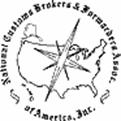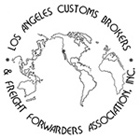Importing Seafood Into the United States
FDA is responsible for the safety of all fish and fishery products entering the United States. The agency uses every available tool to identify immediate or potential threats as well as the best course of action to protect public health and safety. As part of the FDA's import safety effort, the agency provides as much available information and guidance as possible to consumers, industry, and government about seafood safety.
Hazard Analysis and Critical Control Points
FDA's multifaceted and risk-informed seafood safety program relies on various measures of compliance with its seafood Hazard Analysis and Critical Control Points(HACCP) regulations, which describe a management system in which food safety is addressed through the analysis and control of biological, chemical, and physical hazards from raw material production, procurement and handling, to manufacturing, distribution and consumption of the finished product.
For imported seafood, these measures include:
- inspections of foreign processing facilities,
- sampling of seafood offered for import into the United States,
- domestic surveillance sampling of imported products,
- inspections of seafood importers,
- evaluations of filers of seafood products,
- foreign country program assessments, and
- relevant information from our foreign partners and FDA overseas offices.
Foreign Inspections and Global Presence
FDA has increased the number of foreign site inspections in recent years, and is working globally to better accomplish its domestic mission to promote and protect the public health of the United States. FDA has strengthened and better coordinated its international engagements by establishing permanent FDA posts abroad in strategic locations. The posting of FDA staff in certain overseas regions is a key part of the agency's strategy for expanding oversight of imported food.
PREDICT
FDA is also implementing a new screening system for imports, the Predictive Risk-based Evaluation for Dynamic Import Compliance Targeting (PREDICT), which will improve the current electronic screening system by targeting higher risk products for exam and sampling and minimizing the delays of shipments of lower risk products. PREDICT will improve the agency.s ability to detect trends and investigate patterns. This, in turn, will help to make more efficient use of FDA.s import resources and allow FDA to adjust import sampling levels for seafood products over time and as appropriate.
Foreign Country Assessments
Foreign country assessments are systems reviews that offer FDA a broad view of the ability of the country.s industry and regulatory infrastructure to control aquaculture drugs. These assessments allow FDA to become familiar with the controls that a country.s competent authority is implementing for the distribution, availability, and use of animal drugs. FDA uses country assessments to evaluate the country.s laws for, and implementation of, control of animal drug residues in the aquaculture products it ships to the United States.
The country assessment program helps FDA direct its foreign inspection and border surveillance resources more effectively and efficiently and allows FDA to work directly with countries to resolve drug residue problems.
FDA uses information from country assessments to:
- better target (i.e., increase or decrease) surveillance sampling of imported aquaculture products;
- inform its decisions on what new analytical methods it needs to develop and what drugs or chemicals it should target for surveillance sampling;
- inform its planning of foreign seafood HACCP inspections;
- provide additional evidence for potential regulatory actions, such as an import alert;
- improve collaboration with foreign government and industry contacts to achieve better compliance with FDA.s regulatory requirements; and
- better understand the causes for significant changes in a country.s drug residue problems, such as a sudden spike in noncompliant samples.
Results of Country Assessments
- The assessment trip to China in 2006 was a key consideration in issuance of the China country-wide import alert for specific aquaculture products from China in 2007.
- The country assessments for China in 2006, Chile in 2008, and India in 2010 were considered and resulted in increased sampling and testing under the compliance program and special assignments for aquaculture products from these countries (e.g., eel from China, salmon from Chile, and shrimp from India).
Food Safety Modernization Act of 2011
FDA conducts its seafood safety oversight activities in conformance with its statutory authorities, which have recently been expanded by the Food Safety Modernization Act (FSMA). FSMA represents the first major overhaul of FDA.s food safety law in more than 70 years and will transform FDA.s food safety program. FSMA closes significant and longstanding gaps in FDA.s food safety authority, with new safeguards to prevent, rather than react, to food safety problems, and gives FDA important new tools to ensure that imported seafood is as safe as domestic seafood.
Integrated Food Safety System
FDA collaborates with the President's Food Safety Working Group to modernize food safety by building collaborative partnerships with consumers, industry and regulatory partners.
For example, FDA and the National Marine Fisheries Service's (NMFS) Seafood Inspection Program have certain common and related objectives in carrying out their respective regulatory and service activities that lend themselves to cooperation under a Memorandum of Understanding (MOU) that sets forth the working arrangements between the agencies that facilitate each agency.s efforts to discharge its responsibilities related to the inspection of fish and fishery products.
National Residue Monitoring Program
In addition to implementing the new FSMA authorities, FDA will continue the national residue monitoring program and recognizes the benefit of such a program to ensure that foods are not contaminated with illegal animal drug residues. FSMA directs FDA to establish a program for testing of food by accredited laboratories and will require that food be tested by accredited laboratories in some circumstances, such as in support of admission of imported food. FDA is developing the laboratory accreditation program as part of its FSMA implementation efforts.
Consumer Information
The government-wide FoodSafety.gov web site provides a widget that displays the latest recalls and food safety alerts from both FDA and USDA. If you have a mobile device, such as an Android phone, you may be able to download an application to get recalls direct to your phone by going to Recalls.gov.
For more information visit:
http://www.fda.gov/Food/FoodSafety/Product-SpecificInformation/Seafood/default.htm



Important Links